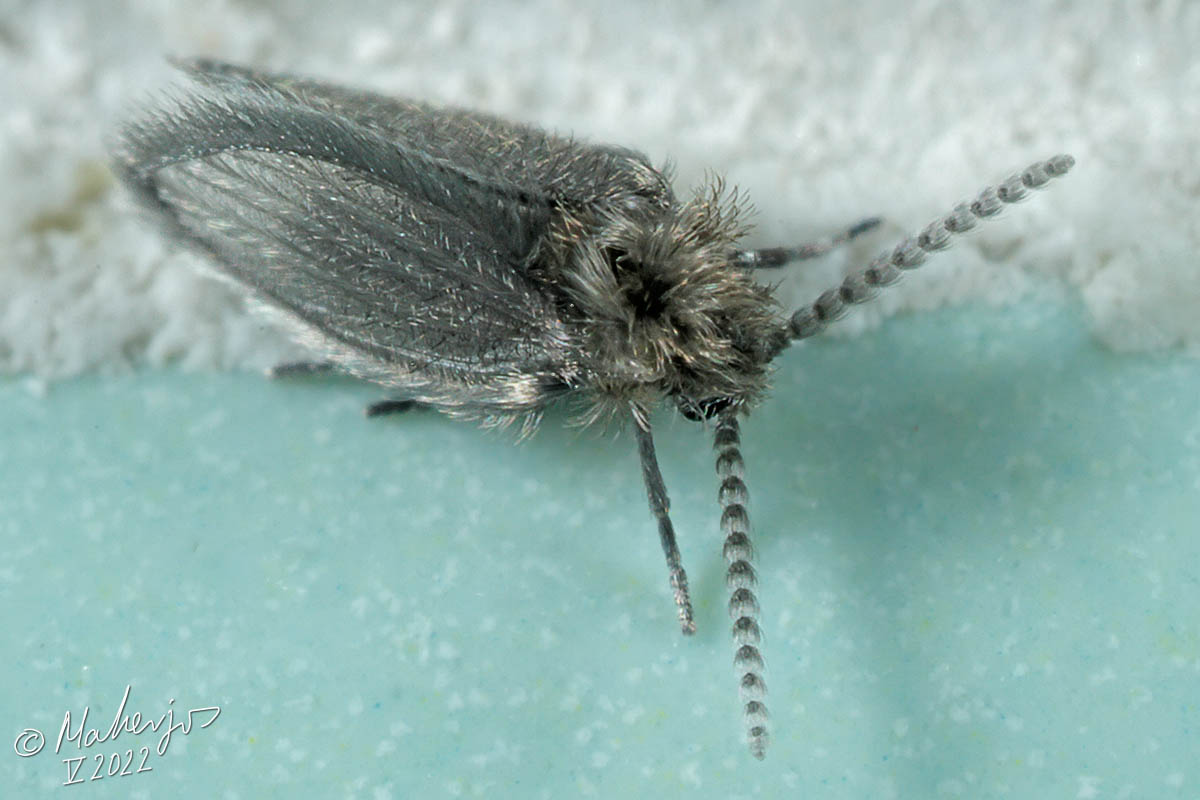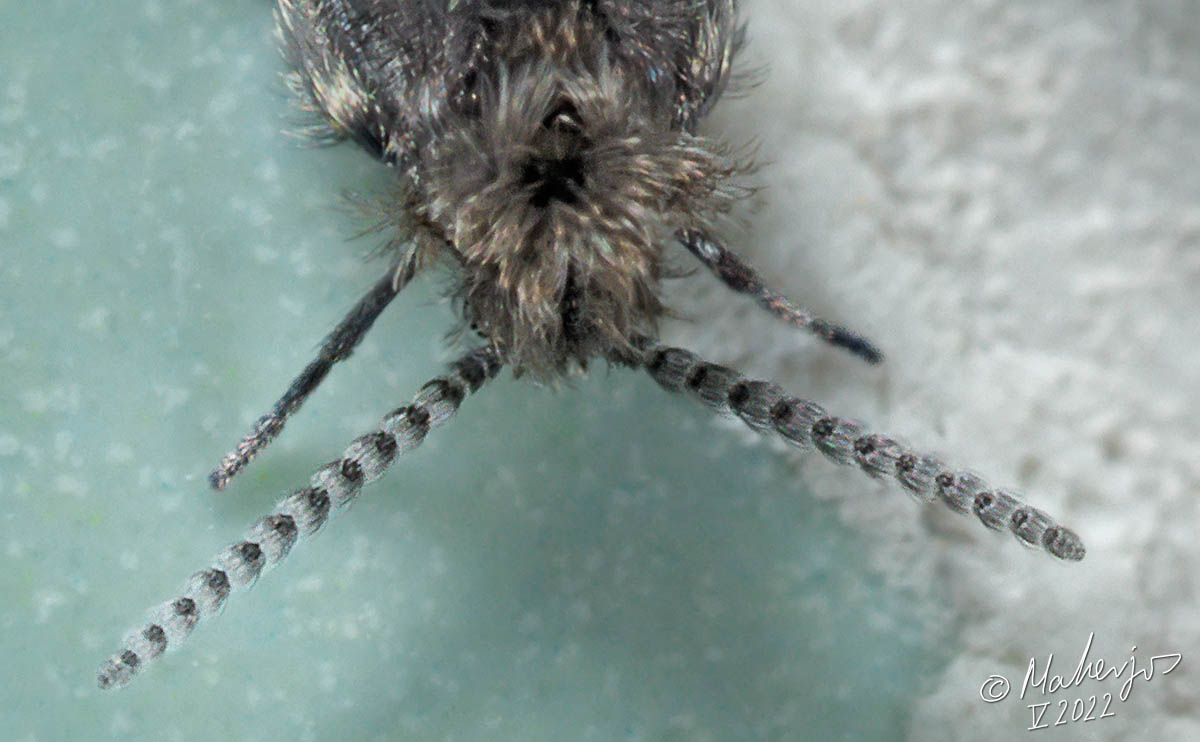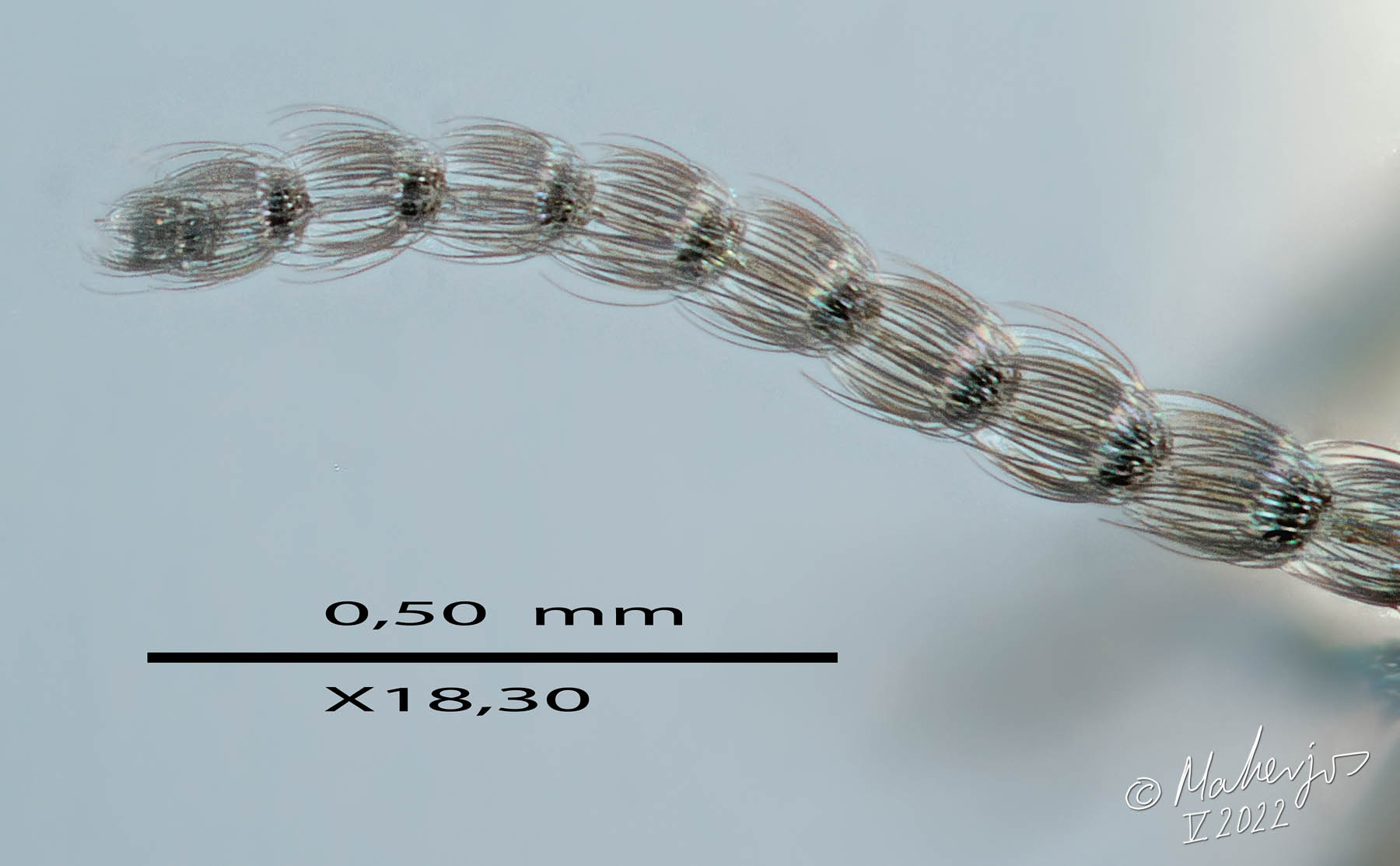Diptera.info :: Identification queries :: Diptera (adults)
|
Psychoda spec. + Antenna tip detail with 18.30 magnification
|
|
| Maherjos |
Posted on 01-05-2022 11:16
|
|
Member Location: Motril (Granada) España Posts: 2401 Joined: 02.09.09 |
Photograph taken on May 1, 2022 in the bathroom of housing, in urban helmet of Motrill, Granada, Spain. Immediate area of the Mediterranean coast. Approximate size, no antennae 2,0 mm Click over the image increases in size 1200ppp Thanks in advance for any help! 
Maherjos attached the following image:  [119.35Kb] Edited by Maherjos on 04-05-2022 16:01 |
|
|
|
| Maherjos |
Posted on 01-05-2022 11:16
|
|
Member Location: Motril (Granada) España Posts: 2401 Joined: 02.09.09 |
.
Maherjos attached the following image:  [119.2Kb] |
|
|
|
| weia |
Posted on 01-05-2022 12:12
|
|
Member Location: Posts: 435 Joined: 10.07.11 |
Psychoda spec. Only with a very good picture of the final segments of the antenna is it sometimes possible to go further. But even then there are several candidates. So it remains Psychoda spec. |
|
|
|
| Maherjos |
Posted on 02-05-2022 11:45
|
|
Member Location: Motril (Granada) España Posts: 2401 Joined: 02.09.09 |
weia wrote: Psychoda spec. Only with a very good picture of the final segments of the antenna is it sometimes possible to go further. But even then there are several candidates. So it remains Psychoda spec. Thanks weia. The difficulty in obtaining good detail photos of the ends of the insect's antennae is not in their tiny size, but rather in the fact that when the collected insect dies, its antennae fold over the body, becoming entangled with the legs and hairs of the body, resulting in difficulty. isolate them... I can still get the photos up to X5 with the live insect, but apparently they do not give enough detail for identification. In order to get photographs with greater detail (I can get quality photos up to X20 - X25 magnification), you have to take photos using the stacking procedure and for this the insect must be immobile, that is, dead. So far I have not succeeded, but as long as these small insects continue to appear in my bathroom, I will keep trying.... Kind regards, Jose Marin.  |
|
|
|
| Maherjos |
Posted on 04-05-2022 15:58
|
|
Member Location: Motril (Granada) España Posts: 2401 Joined: 02.09.09 |
Detail of the tip of the antennae of Psychoda sp. with magnification of X18, 30 times its original size. I don't know if this photograph of the detail of the antennae will be enough to identify the species. The truth is that, to overcome this increase, it would be very difficult for me...  1800 pixel photography. Clicking on the image will increase the size... Maherjos attached the following image:  [157.85Kb] |
|
|
|
| weia |
Posted on 04-05-2022 23:25
|
|
Member Location: Posts: 435 Joined: 10.07.11 |
Very nice try! I only know the antenna tops of the 19 species of Belgium and Netherlands. And I do not see exactly this top. Sorry. |
|
|
|
| Maherjos |
Posted on 05-05-2022 17:08
|
|
Member Location: Motril (Granada) España Posts: 2401 Joined: 02.09.09 |
weia wrote: Very nice try! I only know the antenna tops of the 19 species of Belgium and Netherlands. And I do not see exactly this top. Sorry. Thank you Weia for trying...  We both did our best to determine the identity of this little dipteran, and that's what's important. I suppose that in the future, with other species we will be able to achieve it. And it is even possible that in the future you can get keys from other Psychoda that will allow you to find out what species the one in this entry corresponds to... Kind regards, from the South of Spain. José Marín |
|
|
|
| Jump to Forum: |












